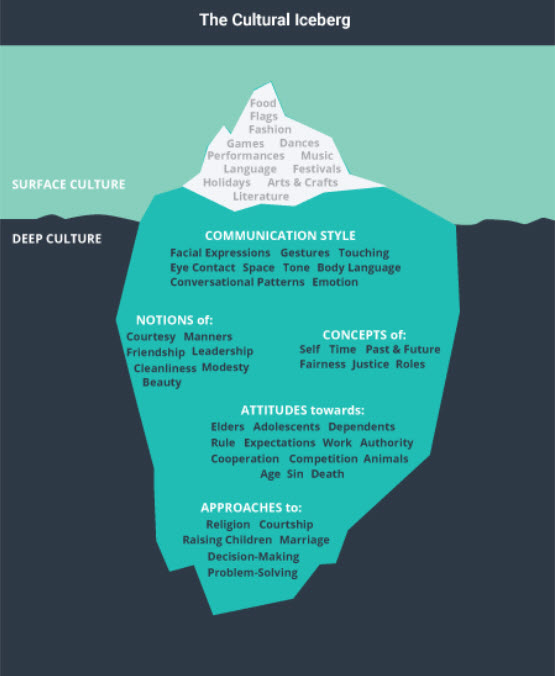29 What is Intercultural Communication?
Venecia Williams; Nia Sonja; and Verna Johnson
What is Culture?
It’s hard to talk about effective workplace communication without also talking about intercultural communication. Many people think this only means conversations between people from different countries—but culture can vary even within the same country, province, or workplace.
People from different communities or departments may have different ways of speaking, making decisions, or solving problems. Factors like geography, education, language, and social background all shape how we share information and work together.
Every organization has its own overall culture—and within it, smaller subcultures. For example, the sales team and the accounting team may use different language, focus on different priorities, or approach customer service in distinct ways. Each group develops its own communication style based on its work environment and the backgrounds of its members.
Culture isn’t just about food, clothing, or holidays. It also includes how we think, what we value, and how we expect others to behave. These expectations shape how we speak, write, listen, and respond to others—including through tone, body language, and facial expression.
Defining Culture
Culture is made up of shared values, beliefs, and behaviours that are passed between members of a group. These shared patterns help define what a group sees as “normal” or the “right” way to think and act.
Culture can be understood through five key characteristics:
- Culture is learned—We’re not born with it; we absorb it from those around us.
- Culture is shared—It’s passed among members of a group or community.
- Culture is dynamic—It changes over time.
- Culture is systemic—It influences many areas of life, not just one.
- Culture is symbolic—We use language, gestures, images, and objects to express it.
A helpful way to picture culture is as an iceberg (See Figure 4.1 below). The tip of the iceberg includes visible aspects of culture—things we can easily see, like dress, language, or traditions. But most of culture lies below the surface: things like values, assumptions, and patterns of thought that deeply influence how people behave and communicate

Intercultural, Cross-Cultural, and Multicultural: What’s the Difference?
These three terms are often used interchangeably, but they describe different ways of engaging with cultural difference:
Multicultural
A multicultural environment includes people from many cultural backgrounds. A multicultural workplace might celebrate diversity through food, music, holidays, or cultural events. However, these surface-level celebrations don’t always address deeper issues of inclusion, equity, or communication.
Cross-cultural
A cross-cultural approach focuses on respectful interactions between people from different cultures. It often includes learning about customs, greetings, or etiquette. While this can be helpful, it may still lead to stereotypes if we don’t go deeper or reflect on our own assumptions.
Intercultural
Intercultural communication involves deeper engagement. It means making a genuine effort to understand others’ cultural perspectives and reflect on your own. This approach can be challenging, but it leads to stronger relationships, better collaboration, and more inclusive workplaces.
Why It Matters
When we meet someone new, we naturally notice both similarities and differences. While both can shape connection, it’s often the differences that cause misunderstandings. Without realizing it, we may place people into “in-groups” (like us) or “out-groups” (not like us), and respond based on stereotypes instead of seeing the individual.
This kind of thinking can create barriers—and even lead to conflict.
That’s why developing intercultural communication skills is so important. These skills help us build awareness, reduce bias, and communicate more thoughtfully, especially in diverse and global work environments.
Attribution
This chapter contains material taken from Chapter 1 .4 “Intercultural Communication” in Fundamentals of Business Communication Revised and is used under a Creative Commons Attribution-ShareAlike 4.0 International License.
References
References are at the end of this chapter.

